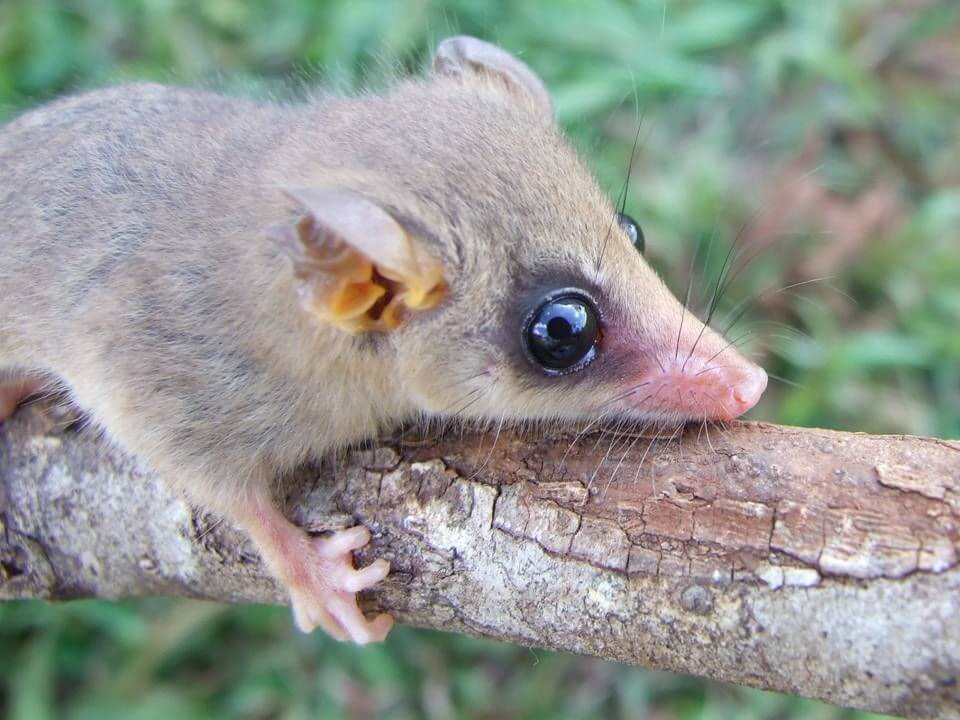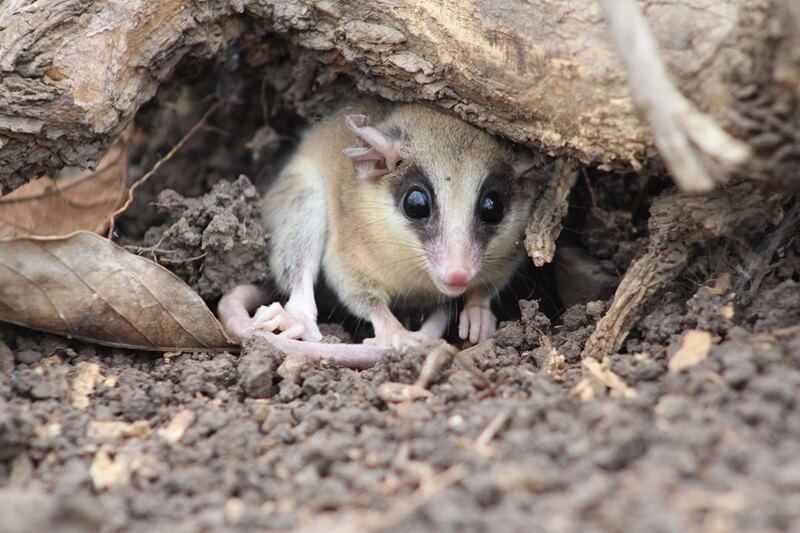Learn All About Mouse Opossums

Mouse opossums, also known as marmosas, are a group of marsupials with a rather negative reputation due to their appearance. However, and despite the fact that their image doesn’t fit perfectly with human standards of “cuteness”, they’re still very interesting animals.
And, above all, they’re peaceful beings that would rarely be a problem for us, as long as we don’t put them in a compromising situation. In this article, you can get to know them better, and we’re sure you’ll appreciate just how special they are.
Taxonomy and characteristics of mouse opossums
Marmosa is the name of the genus we’re dealing with, which groups small didelphimorphs of the Didelphidae family. They’re commonly known as mouse opossums. Because they’re so similar to other genera, species often change taxonomic categories, so it’s important to be aware of the scientific debate.
They’re generally small animals, not exceeding 40 centimeters (16 inches) including the tail. They have a naked, prehensile tail, but lack a marsupium, unlike regular opossums.
Although all species have a sharp snout, pointed teeth, and large black eyes in common, their fur varies in color. The only thing they have in common is that they tend to be lighter in the ventral areas than the hair on the back.
Habitat
The different species that make up the genus Marmosa are found throughout South and Central America. The most northern is the Mexican mouse opossum (Marmosa mexicana), which is found in the north of the country that gives it its name. On the other hand, the common fat-tailed mouse opossum, (Thylamys pusillus) extends to the northern limit of Argentine Patagonia.
The habitat they occupy depends largely on the species and its adaptations. Thus, it’s possible to see them in tropical forests, deserts and coastal areas. Being able to move from tree branches to swampy soils, mouse opossums are truly adaptable mammals.
Mouse opossum feeding
The mouse opossum’s feeding style is omnivorous and opportunistic. Their teeth aren’t specialized at all, which prevents them from tearing meat or opening fruits with shells, but they do take big bites.
Their diet is based especially on insects such as grasshoppers and locusts, but also includes sweet fruits, such as bananas and mangoes. They’re occasionally capable of catching small rodents and lizards, as well as stealing eggs from unguarded nests.
Behavior
In general, they’re nocturnal and nomadic animals, although they do have sedentary periods. Species that live in less wooded areas tend to be more terrestrial and dig burrows. On the other hand, those that live in wooded areas are more arboreal.
The environment they live in has an important effect on mouse opossums’s habits, as their great capacity for adaptation means that each species develops specific habits depending on the available resources.
Mouse opossums are solitary animals that only meet to breed. Sometimes it’s possible to see male and female territories that overlap, but this is never the case for individuals of the same sex.
Reproduction of mouse opossums
Females are polyestrous and come into estrus approximately every 23 days. However, they usually give birth only two or three times a year. Reproduction is sexual and viviparous.
The gestation period depends on the species, but is around 2 weeks. They usually give birth to large litters of up to 10 young, with a minimum of 5. Unlike opossums, marmosas don’t have a marsupial pouch, so the young are fed in the female’s abdomen.
Lactation is also variable depending on the species being studied, and the period ranges from 2 to 6 months. When the young aren’t suckling, they cling to their mother’s back, which gives rise to the well-known image of the mother covered with her young.
Marmosa species that dig burrows sometimes leave their young protected there.
In general, these are animals with a short life expectancy of about 3 years. Sexual maturity is reached quickly, before they reach one year of age. From the second year onwards, reproductive capacity begins to decline.
Conservation status

Except for some species, such as the dryland mouse opossum (Marmosa xerophila) and the little woolly mouse opossum ( Marmosa phaea), mouse opossums aren’t in imminent danger of extinction. These two mentioned are in vulnerable status (VU) and their populations are declining due to habitat loss for housing and agricultural development.
These small animals have incredible adaptations, such as an opposable thumb, and can survive almost anywhere. One only needs to look at them a little closer, without judgment, to appreciate what an incredible work of nature they are.
All cited sources were thoroughly reviewed by our team to ensure their quality, reliability, currency, and validity. The bibliography of this article was considered reliable and of academic or scientific accuracy.
- Pérez-Hernandez, R., López Fuster, M. & Ventura, J. 2016. Marmosa xerophila (fe de erratas publicada en 2017). La Lista Roja de Especies Amenazadas de la UICN 2016: e.T12815A115106154. https://dx.doi.org/10.2305/IUCN.UK.2016-3.RLTS.T12815A22174448.en . Consultado el 19 de octubre de 2022 .
- Solari, S. & Patterson, B. 2015. Marmosa phaea. The IUCN Red List of Threatened Species 2015: e.T136244A22175055. https://dx.doi.org/10.2305/IUCN.UK.2015-4.RLTS.T136244A22175055.en. Accessed on 19 October 2022.
- Voss, R. S., Giarla, T. C., & Jansa, S. A. (2021). A Revision of the Didelphid Marsupial Genus Marmosa Part 4. Species of the Alstoni Group (Subgenus Micoureus). American Museum Novitates, 2021(3983), 1-31.
